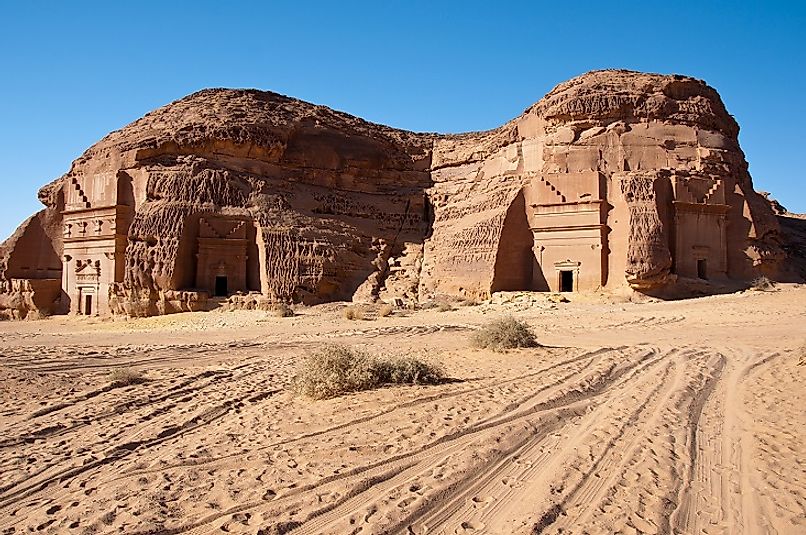Al-Hijr (Mada'in Saleh): Historical Places Of Saudi Arabia

5. Description
The first UNESCO World Heritage Site to be inscribed in the history of the Kingdom of Saudi Arabia, the Mada'in Saleh or the Al-Hijr is an ancient archaeological site in the Kingdom. The site is located in the Al-Ula sector in the Al Madinah region of the country. As per the accounts of historians, the Al-Hijr site was inhabited by the people of the Arabian Nabatean kingdom as far back as the 1st Century AD. This makes it the second largest settlement of the Nabatean Kingdom after Petra, Jordan, and also its southernmost settlement.
4. Tourism
Though the Al-Hijr site has immense potential to draw tourists from around the world, currently the tourist footfall at the site is low. The strict legal and cultural mandates to be followed to visit the Kingdom of Saudi Arabia often deter tourists from visiting the archaeological site. Also, there is a belief among the Muslims of the region that the site is cursed. This belief has its roots in local legends that claim that since the people of the site used to worship idols, Allah, displeased by this behavior of the people, soon cursed the site and as a consequence to the curse, earthquakes and lightning destroyed the settlements and wiped out the people of Al-Hijr. The prevalence of this belief often deters many Muslims from visiting the place or arranging tours to this site. Currently, special permits are required to visit Al-Hijr and both road and air travel facilities are available to reach the site.
3. Uniqueness
The Al-Hijr site is unique in many ways. It preserves ancient history in its remarkable architecture, art and craft specimens. The intricate ornamental designs carved into the sandstone structures of the site speak volumes about the skilled craftsmanship of ancient Arabians. The confluence of a number of architectural styles, the Egyptian, Assyrian, Hellenistic and others can be evident in the architecture of the Al-Hijr. The ancient site also gives us an insight into the way of life of people in the 1st Century AD and later times, their agricultural practices and engagement in international caravan trade. The fact that the people of the Nabatean Kingdom were in constant contact with other major cultures of the world is clearly visible in the use of international languages, scripts and artistic styles in the facades of tombs and other architectural monuments of the place.
2. Habitat
The Al-Hijr site is today very well preserved since it is located in an arid environment lacking the destructive effect of moisture. The land was also left abandoned for long periods of time and local beliefs of the site being cursed also impeded the resettlement of the ancient city. This helped preserve the site in its old state with almost no negative impact of the modern human culture. The people of the ancient Nabatean kingdom probably survived in this arid habitat by developing highly progressive agricultural practices like oasis agriculture and dug out deep wells to extract water for their farming requirements.
1. Threats and Conservation
Historians and archaeologists feel that the Al-Hijr site is a gem of the world which must be conserved for the future generations. Though there are no immediate threats facing this archaeological site, future encroachment of growing human settlements might pose a threat to the structures here. There is thus a need to intensify the efforts to protect and preserve the Al-Hijr and some steps are already being taken by the Saudi government in this direction.







